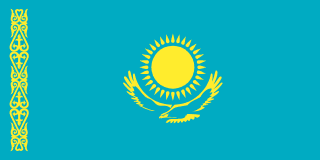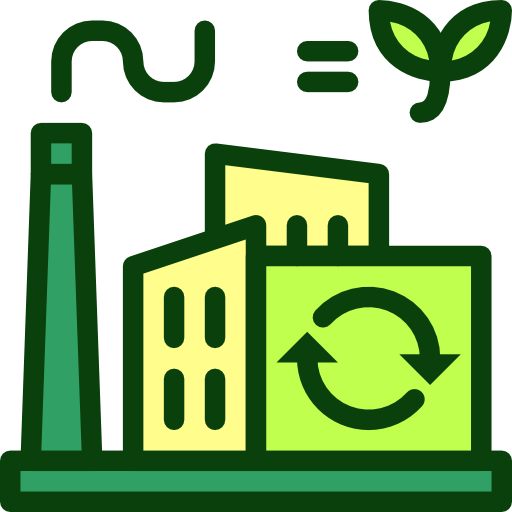Kazakhstan - Geography

Here, let us take a look at the Geography of Kazakhstan. World's largest landlocked country and one of only two landlocked countries in the world that extends into two continents (the other is Azerbaijan); Russia leases approximately 6,000 sq km (2,317 sq mi) of territory enclosing the Baikonur Cosmodrome . Mother's mean age at first birth is 28.9 years (2019 est.) (), whereas, the Maternal mortality ratio is 10 deaths/100,000 live births (2023 est.)
Geographical data of Kazakhstan
| Location | Central Asia, northwest of China; a small portion west of the Ural (Oral) River in easternmost Europe |
|---|---|
| Geographic coordinates | 48 00 N, 68 00 E |
| Map references | Asia |
| Tarrain | vast flat steppe extending from the Volga in the west to the Altai Mountains in the east and from the plains of western Siberia in the north to oases and deserts of Central Asia in the south |
| Natural Resources | major deposits of petroleum, natural gas, coal, iron ore, manganese, chrome ore, nickel, cobalt, copper, molybdenum, lead, zinc, bauxite, gold, uranium |
| Natural Hazards | earthquakes in the south; mudslides around Almaty |
| Irrigated Land | 17,794 sq km (2022) |
| Major rivers (by length in km) | Syr Darya river mouth (shared with Kyrgyzstan [s], Uzbekistan, and Tajikistan) - 3,078 km note: [s] after country name indicates river source; [m] after country name indicates river mouth |
| Major aquifers | |
| Land Boundaries | 13,364 km |
| Border Countries | China 1,765 km; Kyrgyzstan 1,212 km; Russia 7,644 km; Turkmenistan 413 km; Uzbekistan 2,330 km |
| Coastline | 0 km (landlocked); note - Kazakhstan borders the Aral Sea, now split into two bodies of water (1,070 km), and the Caspian Sea (1,894 km) |
| Climate | continental, cold winters and hot summers, arid and semiarid |
| Area | |
| Total Area | |
| Land Area | 2,699,700 sq km |
| Water Area | 25,200 sq km |
| comparative Area | slightly less than four times the size of Texas |
| Maritime Claims | |
| Elevations | |
| Highest point | Pik Khan-Tengri 7,010 m note - the northern most 7,000 meter peak in the World |
| Lowest point | Qauyndy Oyysy -132 m |
| Mean elevation | 387 m |
| Land Use | |
| Agricultural land | 79.4% (2022 est.) |
| Agricultural land: arable land | arable land: 11% (2022 est.) |
| Agricultural land: permanent crops | permanent crops: 0% (2022 est.) |
| Agricultural land: permanent pasture | permanent pasture: 68.3% (2022 est.) |
| Forest | 1.3% (2022 est.) |
| Other | 19.3% (2022 est.) |
Population Distribution
Most of the country displays a low population density, particularly the interior; population clusters appear in urban agglomerations in the far northern and southern portions of the country
People and Society
In Kazakhstan, the different Ethnic groups are such that we have: Kazakh 71%, Russian 14.9%, Uzbek 3.3%, Ukrainian 1.9%, Uyghurs 1.5%, German 1.1%, Tatar 1.1%, other 4.9%, unspecified 0.3% (2023 est.)
| Population | |
|---|---|
| Pop growth rate | 0.86% (2024 est.) |
| Birth rate | 17.2 births/1,000 population (2024 est.) |
| Death rate | 8.1 deaths/1,000 population (2024 est.) |
| Health expenditure | |
| Physicians Density | |
| Hospital bed Density | 6.7 beds/1,000 population (2020 est.) |
| Total fertility rate | 2.58 children born/woman (2024 est.) |
| Gross reproduction rate | 1.25 (2024 est.) |
| Contraceptive prevalence rate | 53% (2018) |
| Est married women (ages 15-49) | 61.8% (2023 est.) |
| Literacy | |
| Education expenditures | |
| Net Migration rate | -0.4 migrant(s)/1,000 population (2024 est.) |
| Nationality | Kazakhstani | Kazakhstani(s) |
| Languages | |
| Religions | Muslim 69.3%, Christian 17.2% (Orthodox 17%, other 0.2%), Buddhism 0.1%, other 0.1%, non-believers 2.3%, unspecified 11% (2021 est.) |
| Age Structure | |
| 0-14 years | 27.6% (male 2,883,200/female 2,712,772) |
| 15-64 years | 62.8% (male 6,233,881/female 6,486,019) |
| 65 years and over | 9.6% (2024 est.) (male 700,091/female 1,244,043) |
| Dependency Ratios | |
| Total dependency ratio | 59.3 (2024 est.) |
| Youth dependency ratio | 44 (2024 est.) |
| Elderly dependency ratio | 15.3 (2024 est.) |
| Potential support ratio | 6.5 (2024 est.) |
| Median Age | |
| Total | 31.9 years (2024 est.) |
| Male | 30 years |
| Female | 33.8 years |
| Urbanization | |
| Urban population | 58.2% of total population (2023) |
| Rate of urbanization | 1.19% annual rate of change (2020-25 est.) |
| Major urban areas (Pop) | 1.987 million Almaty, 1.291 million NUR-SULTAN (capital), 1.155 million Shimkent (2023). |
| Sex Ratio | |
| At birth | 1.07 male(s)/female |
| 0-14 years | 1.06 male(s)/female |
| 15-64 years | 0.96 male(s)/female |
| 65 years and over | 0.56 male(s)/female |
| Total population | 0.94 male(s)/female (2024 est.) |
| Infant Motality | |
| Total | 8 deaths/1,000 live births (2024 est.) |
| Male | 8.9 deaths/1,000 live births |
| Female | 7 deaths/1,000 live births |
| Life Expectancy at birth | |
| Total population | 73.3 years (2024 est.) |
| Male | 69 years |
| Female | 77.9 years |
| Drinking Water Sources | |
| Improved: urban | urban: 100% of population |
| Improved: rural | rural: 93.8% of population |
| Improved: total | total: 97.4% of population |
| Unimproved: urban | urban: 0% of population |
| Unimproved: rural | rural: 6.2% of population |
| Unimproved: total | total: 2.6% of population (2020 est.) |
| Sanitation facility acess | |
| Improved: urban | urban: 99.9% of population |
| Improved: rural | rural: 99.9% of population |
| Improved: total | total: 99.9% of population |
| Unimproved: urban | urban: 0.1% of population |
| Unimproved: rural | rural: 0.1% of population |
| Unimproved: total | total: 0.1% of population (2020 est.) |
| Alcohol consumption per capita | |
| Total | 3.73 liters of pure alcohol (2019 est.) |
| Beer | 2.52 liters of pure alcohol (2019 est.) |
| Wine | 0.16 liters of pure alcohol (2019 est.) |
| Spirits | 1.05 liters of pure alcohol (2019 est.) |
| Other alcohols | 0 liters of pure alcohol (2019 est.) |
| Tobacco use | |
| Total | 20.1% (2025 est.) |
| Male | 35.7% (2025 est.) |
| Female | 6.3% (2025 est.) |
| Child marriage | |
| Women married by age 15 | 0.2% (2015) |
| Women married by age 18 | 7% (2015) |
Demographic profile
All Important Facts about Kazakhstan
Want to know more about Kazakhstan? Check all different factbooks for Kazakhstan below.
-
 Kazakhstan Factbook
Kazakhstan Factbook
-
 The Economy of Kazakhstan
The Economy of Kazakhstan
-
 Learn about the Government of Kazakhstan
Learn about the Government of Kazakhstan
-
 Communication in Kazakhstan
Communication in Kazakhstan
-
 Popular Universities in Kazakhstan
Popular Universities in Kazakhstan
-
 Enerny in Kazakhstan
Enerny in Kazakhstan
-
 Transport in Kazakhstan
Transport in Kazakhstan
-
 The Geography and society of Kazakhstan
The Geography and society of Kazakhstan
-
 The Environment of Kazakhstan
The Environment of Kazakhstan
-
 Military and security in Kazakhstan
Military and security in Kazakhstan